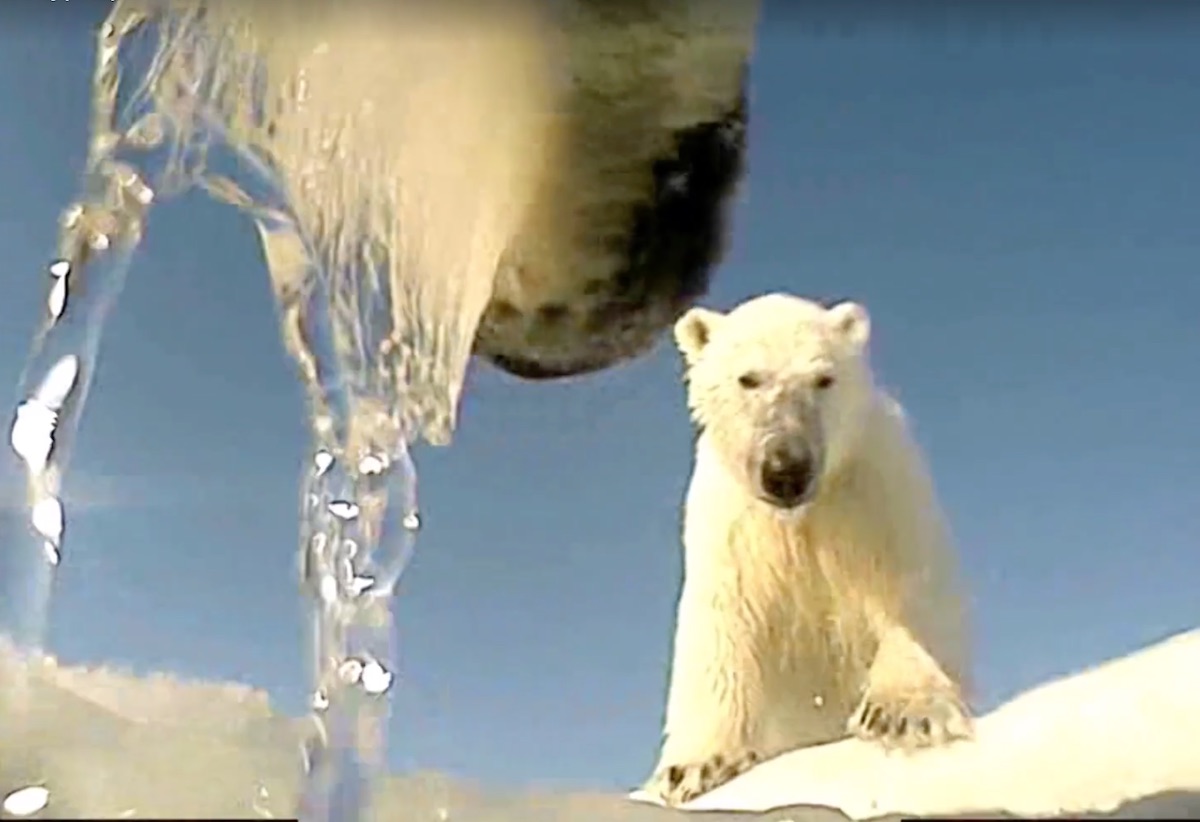Polar Bear Body Cam Shows Predator's POV
New footage from a polar bear body cam shows how these ursine inhabitants of the Arctic play, swim and hunt.
Just released by the U.S. Geographic Survey, the footage is from a point-of-view camera around the neck of a female polar bear from the southern Beaufort Sea, just north of Alaska. According to the USGS, scientists fitted the female with the camera to track her daily activities, behaviors and feeding rates.
The footage captures a bear's-eye-view of the world as the female plods across the ice, chows down on a seal, has a play fight with another polar bear and swims in the ocean. The goal of the project, according to the USGS, is to better understand how polar bears are responding to declines in sea ice in the Arctic.

Polar bears (Ursus maritimus) were listed as threatened under the Endangered Species Act in 2008. The main reason for the listing, according to the U.S. Fish & Wildlife Service, was the continuing loss of sea ice, which threatens the bears' ability to hunt for seals during the winter. A 2015 study in the journal Ecological Applications found that polar bear populations in the southern Beaufort Sea declined between 25 percent and 50 percent from 2001 to 2010.
The International Union for Conservation of Nature (IUCN) estimates that there are about 26,000 polar bears split into 19 different populations across the Arctic. The bears prey mostly on ringed seals and bearded seals, according to conservation organization Polar Bears International, which is what makes them so vulnerable to Arctic melt. As the fall freeze comes later in the Arctic and the spring melt starts sooner, bears are stuck on solid ground, unable to hunt seals, according to a 2013 review article in the journal Topics in Companion Animal Medicine.
"Polar bears have few alternatives if their habitat (the sea ice) and their access to their ringed seal prey rapidly disappear," the author wrote.
And sea ice is rapidly disappearing. Scientists have been observing record lows in ice extent for years and now predict that the Arctic may be entirely ice-free in the summerby the middle of the century. This year, sea ice in the Arctic actually retreated briefly in November, an event scientists said was virtually unprecedented. Winter sea ice has been seen to retreat only once before, in November 2013, but that drop was 5,400 square miles (13,986 square kilometers) compared to 2016's 19,300 square miles (49,987 sq km).
Sign up for the Live Science daily newsletter now
Get the world’s most fascinating discoveries delivered straight to your inbox.
Original article on Live Science.

Stephanie Pappas is a contributing writer for Live Science, covering topics ranging from geoscience to archaeology to the human brain and behavior. She was previously a senior writer for Live Science but is now a freelancer based in Denver, Colorado, and regularly contributes to Scientific American and The Monitor, the monthly magazine of the American Psychological Association. Stephanie received a bachelor's degree in psychology from the University of South Carolina and a graduate certificate in science communication from the University of California, Santa Cruz.










